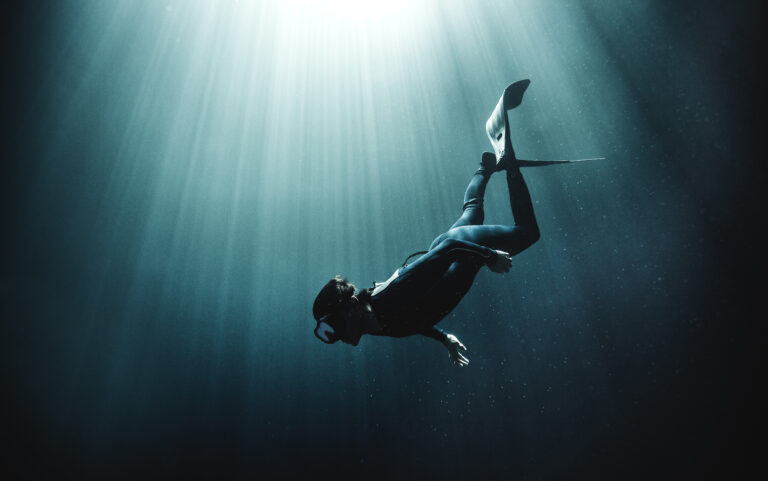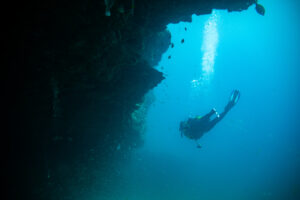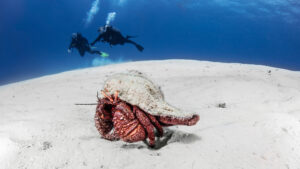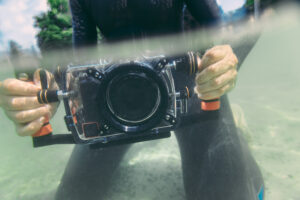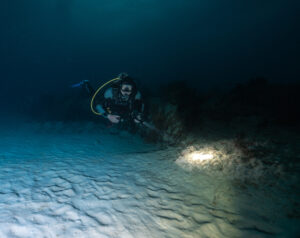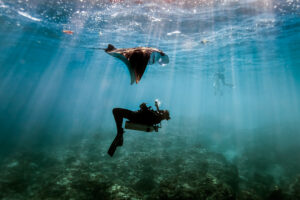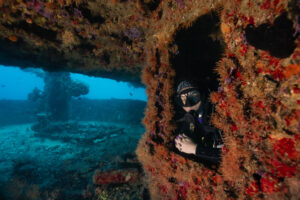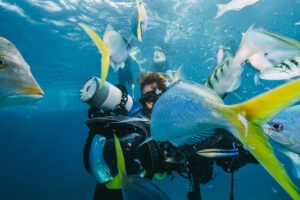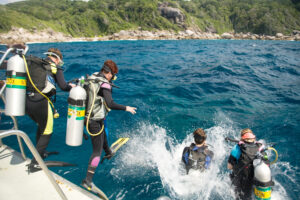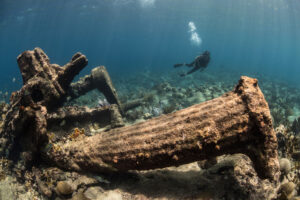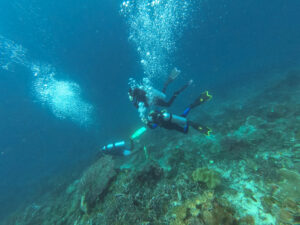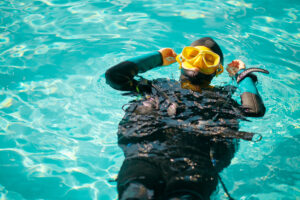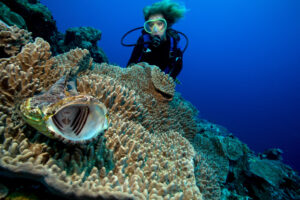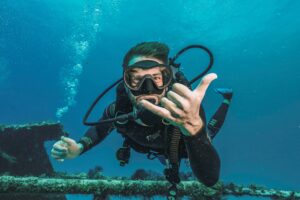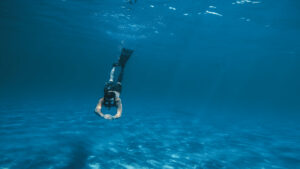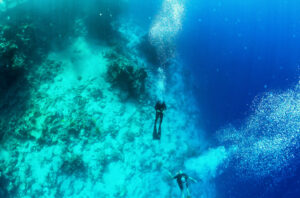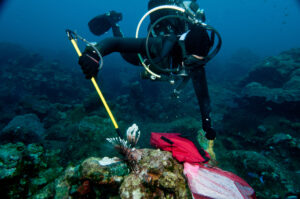What is Apnea?
Apnea, a term derived from the Greek word “apnoia,” meaning “want of breath,” is commonly defined as a temporary suspension of breathing. Initially used in medical contexts, apnea has evolved to become synonymous with freediving, a form of underwater diving that requires divers to hold their breath while exploring the depths of the ocean. This association has led to the emergence of a dynamic and rapidly growing sport that combines the beauty of the aquatic world with the power of human endurance.
Historical Background
Freediving has its roots in ancient civilizations, where inhabitants relied on breath-hold diving for food, commerce, and even warfare. The Ama divers of Japan and Haenyeo divers of Korea, for example, have been practicing this form of diving for over 2,000 years. Ancient Greek sponge divers, who extracted sponges from the ocean floor, also practiced apnea diving. The term “apnea,” however, only entered the sporting lexicon in the 20th century, as interest in freediving grew and formal competitions began to take shape.
Physiology of Apnea
Breath-holding in apnea has profound effects on the human body, and understanding these physiological changes is crucial for freedivers. When a diver holds their breath, the mammalian dive reflex is triggered, conserving oxygen and allowing for a longer dive duration. This reflex causes several changes, such as bradycardia (slowing of the heart rate), peripheral vasoconstriction (narrowing of blood vessels in the extremities), and blood shift (redistribution of blood to vital organs). These adaptations help maintain oxygen levels, reduce oxygen consumption, and protect the body from the increased pressure experienced at depth.
Competitive Freediving
Freediving as a sport has seen significant growth since the 20th century, with multiple organizations hosting national and international competitions. Athletes compete in various disciplines, such as static apnea, dynamic apnea, constant weight, free immersion, and variable weight, to name a few. These disciplines test different aspects of a freediver’s skill, endurance, and mental fortitude.
Static apnea, for instance, measures the maximum time a diver can hold their breath while floating on the water’s surface or submerged just below it. In contrast, dynamic apnea involves covering the greatest horizontal distance underwater on a single breath. Depth disciplines, such as constant weight, free immersion, and variable weight, challenge divers to descend and ascend to maximum depths while adhering to specific rules.
Training and Techniques
Apnea training requires a combination of physical fitness, mental focus, and specialized techniques. Key elements of a successful training program include:
Breath-hold Training
Freedivers practice various breath-hold exercises to improve their ability to retain air and manage oxygen consumption. Techniques such as “empty lung” and “full lung” training can help divers progressively increase their breath-hold duration.
Breathing Techniques
Proper breathing techniques are essential for efficient oxygen uptake and carbon dioxide removal. Diaphragmatic breathing, also known as belly breathing, is a common practice that allows for deeper, more controlled breaths.
Physical Conditioning
Strength and flexibility are vital for efficient movement underwater. Freedivers engage in aerobic exercises, such as swimming and running, to build cardiovascular endurance, and anaerobic exercises, like resistance training, to improve muscle strength.
Mental Preparation
The psychological aspect of apnea diving is just as crucial as the physical. Freedivers must cultivate a sense of relaxation and mental focus to overcome the natural urge to breathe and manage the potential stress of deep diving.
Equalization Techniques
As divers descend, the increasing pressure can cause discomfort in the ears and sinuses. Mastering equalization techniques, such as the Valsalva maneuver and Frenzel technique, allows divers to safely equalize pressure in their ears and sinuses, preventing injury.
Buddy System and Safety
Training with a buddy is essential for safety and skill development. Buddies can provide support, assistance, and feedback, as well as monitor each other for signs of trouble during practice sessions and dives.
Specialized Equipment
Freedivers use a range of specialized equipment to optimize their performance, including low-volume masks, snorkels, long-blade fins, wetsuits, and dive computers. Each piece of equipment serves a unique purpose and contributes to the diver’s safety, comfort, and efficiency underwater.
Environmental Considerations
Apnea diving brings individuals closer to the marine world, fostering an appreciation for ocean conservation and environmental awareness. Freedivers often become advocates for marine life, promoting the protection of vulnerable species and habitats. As the sport grows in popularity, it is crucial for the freediving community to maintain a strong commitment to environmental stewardship and sustainable practices.
Risks and Challenges
While apnea diving offers unique experiences and rewards, it is not without risks. Shallow water blackout, caused by rapidly ascending after a deep breath-hold dive, is a significant hazard that can lead to unconsciousness and even death. Proper training, adherence to safety protocols, and diving within one’s limits can mitigate these risks.
Additionally, the risk of barotrauma, decompression sickness, and lung overexpansion injuries must be carefully managed. Regular medical check-ups, adherence to guidelines, and appropriate training are essential to ensuring the safety and longevity of apnea divers.
Apnea diving, once a purely utilitarian practice, has evolved into a captivating sport that challenges the limits of human potential. By blending physical prowess, mental fortitude, and an intimate connection to the underwater world, freediving offers a unique and enriching experience for its practitioners. As the sport continues to grow and evolve, the apnea diving community must remain dedicated to preserving the oceans’ beauty and promoting safe, responsible, and sustainable practices.

